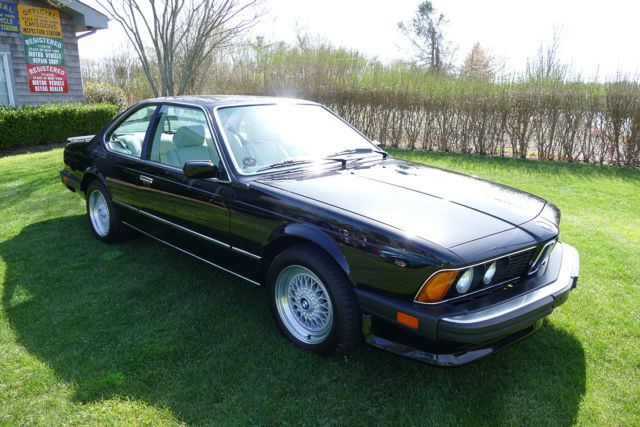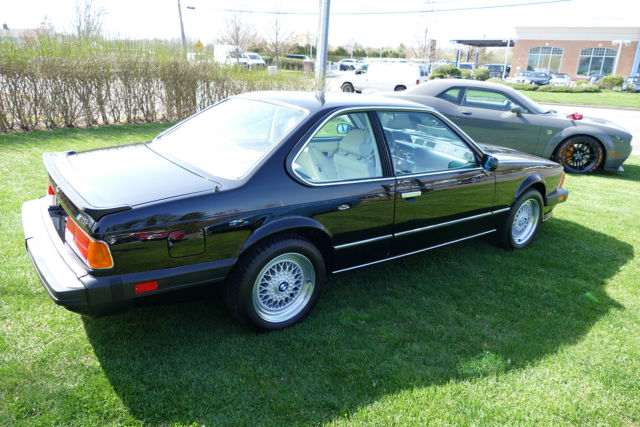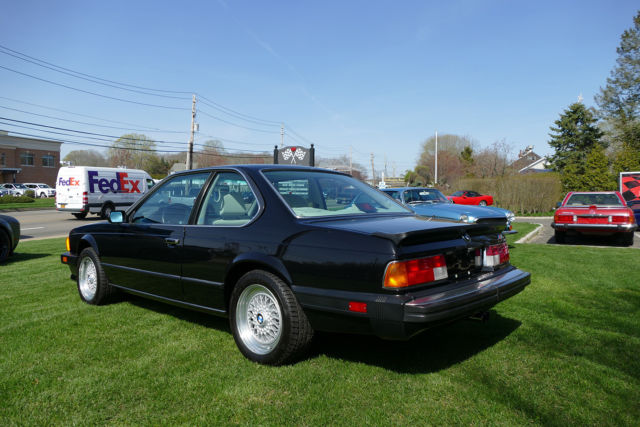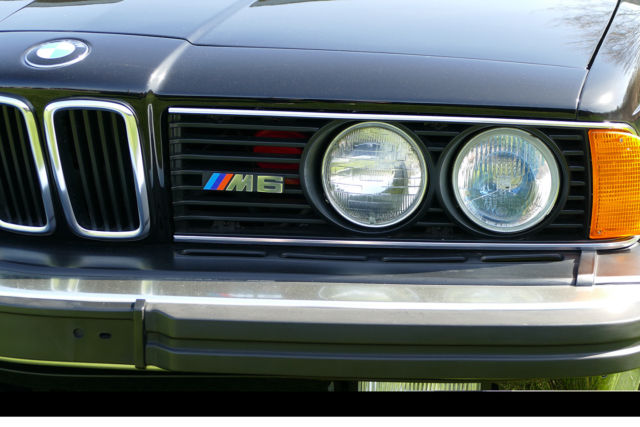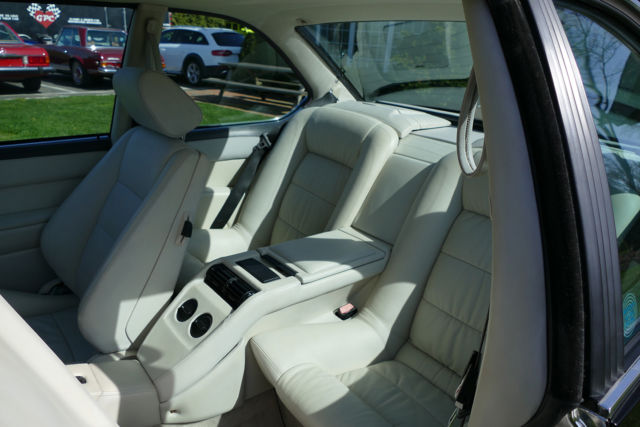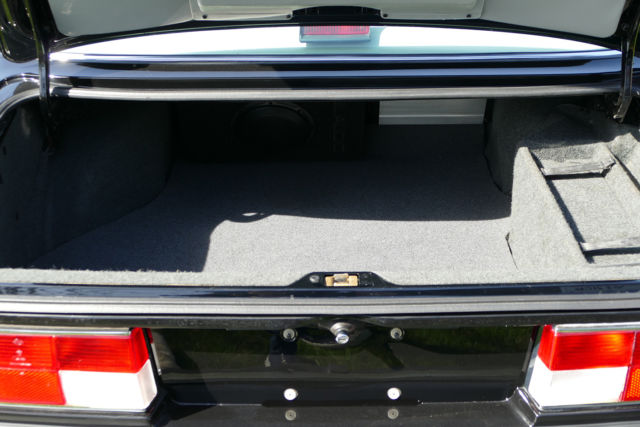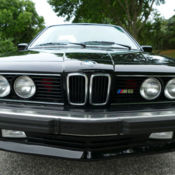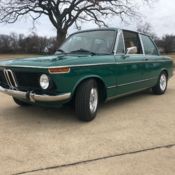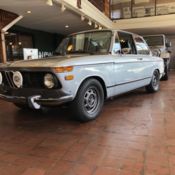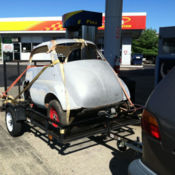BMW M6 coupe full nut and bolt restoration OEM
Technical specifications of BMW M6 1987
| Price: | US $139,000.00 |
|---|---|
| Item location: | Southampton, New York, United States |
| Make: | BMW |
| Model: | M6 |
| Type: | Coupe |
| Year: | 1987 |
| Mileage: | 86,889 |
| VIN: | WBAEE1404H2560091 |
| Color: | Schwarz |
| Engine size: | 6-cyl. 3453cc/256hp FI |
| Number of cylinders: | 6 |
| Power options: | Air Conditioning, Cruise Control, Power Locks, Power Windows, Power Seats |
| Fuel: | Gasoline |
| Transmission: | Manual |
| Drive type: | RWD |
| Interior color: | Lotus White LTH |
| Drive side: | Left-hand drive |
| Safety options: | Anti-Lock Brakes |
| Options: | CD Player, Leather Seats, Sunroof |
| Vehicle Title: | Clear |
| You are interested? | Contact the seller! |
Description
This beautiful BMW M6 coupe has had a full nut and bolt restoration. She was completely dismantled every part was graded, refurbished or replacedwith BMW OEM parts. This is a rust free body which was striped back to bare metal and repainted. The interior underwent a sympathetic restoration asit was in fairly good condition which did not require a full retrim. The engine and transmission where completely overhauled as where the rest of themechanicals and electric systems. All new suspension, brakes and hydraulic system. Hundreds of hours and ten of thousands of dollars have beeninvested with the net result of this M6 potentially being one of the finest in the world. Extensive documentation of all work carried out will accompany thecar.Stunning originalinterior.BBS wheels.
Model history
The BMW 6-Series coupe had the rather unenviable task of following up on the Wilhelm Hofmeister-designed 2000CS, 2800CS and 3.0CS coupes, whose production ran from 1967-75 and was capped by the outrageouscompetition lightweight CSL “Batmobile.”
The new model range had to combine world-class performance with stunning elegance, and Paul Bracq was tasked with re-thinking BMW’s top-line car. The result was a squarer, more aggressive “shark-nosed” coupe,which would be built in various forms to 1989, culminating in the blisteringly fast M 635 CSi, which used the 24-valve M88 motor from the M1 and could hit 158 mph in European tune.
Bracq followed the design cues from the previous BMW coupe, with a divided kidney grille, large greenhouse and broad hood and trunk, but the 6-Series had thin B-pillars, and the bodies were assembled by BMW atDingolfing instead of Karmann’s Osnabruck works.
Handling remained by all-round coil springs and McPherson strut front suspension, semi-trailing rear links, and recirculating ball steering. New to the 6-Series was speed-sensitive power steering, four-wheel disc brakes,and a complete warning light system to alert the driver about engine and electrical systems. The 2+2 seating saw a driver-angled dash flow down to a console that also separated the rear bucket seats.
The first 6-Series cars were launched in Europe as the 630CS, with the 3.0-liter six-cylinder engine, and a four-sped Getrag gearbox or three-speed ZF automatic transmission. The first U.S. cars of 1977 were badged630CSi, with Bosch L-Jetronic injection after grumbles about the modest performance.
Engine sizes gradually increased to 3.2-liters then 3.5-liters, but the 6-Series really hit a bullseye with the M635CSi, which appeared at Frankfurt in 1983. Apart from the 282-bhp M1 engine, it had a limited-slip differentialand the “track link” suspension from the big 7-Series sedans, which was designed to reduce oversteer. ABS brakes arrived at the same time, along with a five-speed manual gearbox or a four-speed ZF automatic.
Badged simply as the BMW M6, the 635CSi finally reach the U.S. in 1987, lavishly equipped with twin air-conditioners (and a beverage chiller in the rear), hand-stitched Nappa leather interior with eight-way power frontseats, and an eight-speaker sound system. Distinctive M6 details included M badges front and rear, a larger front air dam and rear spoiler, matching color side mirrors and BBS wheels. The cars were fitted with newellipsoid headlights, which directed a more precise beam onto the road.
The M6 could manage 0-60 mph in 6.1 seconds, a quarter mile in 14.7 seconds and cruised easily at 140 mph. It retailed for $55,950 but if you wanted the same look with more modest performance, the identicalappearing L6 model was $6,000 less, though only available with an automatic transmission.
BMW electronically limited even its sportiest models to 155 mph in the U.S., but Rug Cunninham BMW ran a de-limited M6 in the 1989 La Carrera Pan American race in Mexico and reported a top speed of 176 mph. In all5,859 M 635 CSi cars were built between 1983 and 1989, with 1,787 of those being the slightly detuned U.S. model BMW M6.


